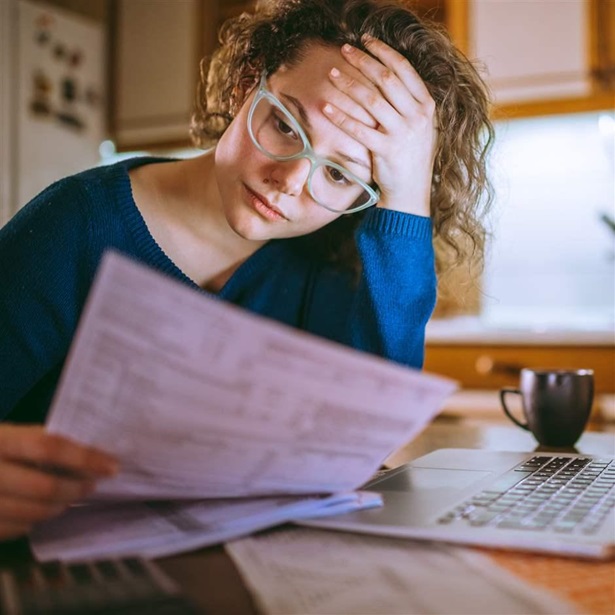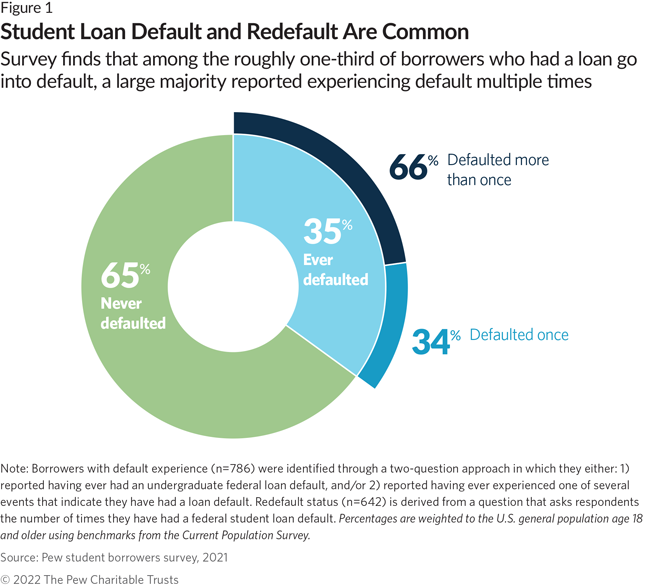Government Hits Reset on Student Loan Defaults, But Many Could Experience Default Again
Pew survey data indicates that most borrowers who experience default do so multiple times
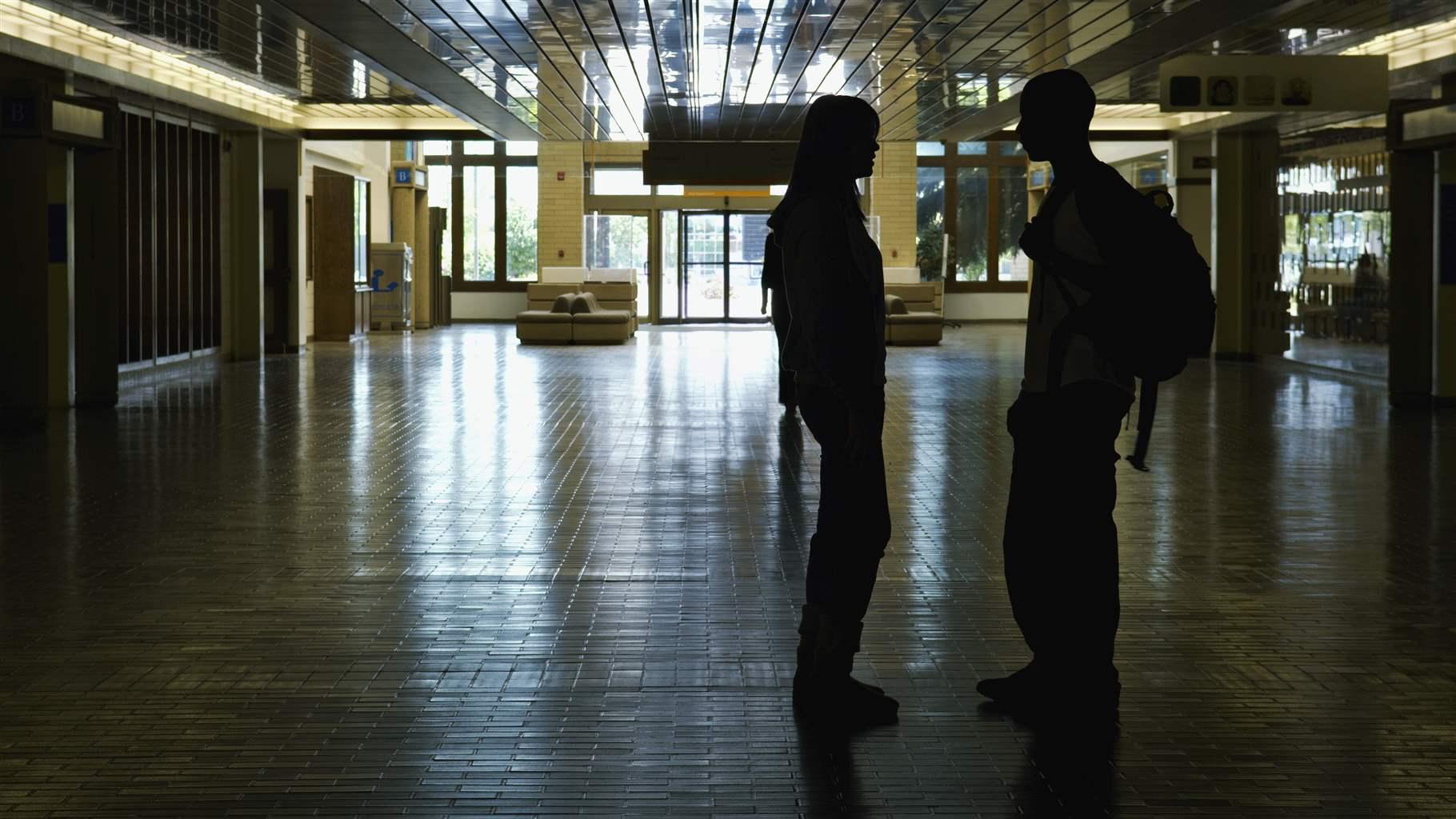
About a third of federal student loan borrowers have experienced default—typically defined as having gone at least 270 days without payment—at some point over the past two decades, according to a survey done for The Pew Charitable Trusts. And among this group of borrowers, nearly two-thirds defaulted multiple times.
The survey, conducted in 2021, focused on borrowers who took out their first federal undergraduate student loans between 1998 and 2018. But the finding on the prevalence of redefault takes on new relevance now as the Department of Education unveils plans to give borrowers a “fresh start” in repayment.
Under the initiative announced in early April, borrowers with defaulted federal loans will resume repayment at the end of the ongoing pandemic-related pause—which began in March 2020—with their loans in good standing. The new policy will provide borrowers a critical reprieve from the potentially severe penalties that can be imposed on them while in default. Still, the survey findings about the frequency of redefault indicate that a clean slate may be no guarantee that struggling borrowers will be able to keep their loans current in the long run.
Borrowers who receive a fresh start could still be vulnerable to serious repayment problems without other major changes to the current system because the challenges that borrowers cited as the cause of their initial default may persist after they get their loans back in good standing. In the survey, respondents were asked to select the reasons for their loans defaulting. They could choose more than one. Among the most frequently cited were having other higher priority debt (72%), feeling overwhelmed (71%), and unaffordable payments (68%). Respondents that had experienced redefault cited the same top reasons to explain why their loans defaulted again.
These findings align with past research suggesting that default and redefault are distressingly common. One study using Department of Education data projected that 38% of borrowers entering college for the first time in the 2003-2004 academic year would experience default by 2023—a near match to Pew’s default rate of 35%. Although data on redefault rates is limited, other research using the same administrative data found that 41% of borrowers redefaulted within five years on a loan that had been rehabilitated or consolidated.
The default and redefault rates in the survey can help broaden the lens for new research. While past studies examined specific cohorts of borrowers—those who entered school or repayment within the same select years—this new data encompasses borrowers who entered repayment at any point over the course of two decades. That helps show the magnitude of default and redefault over a longer time span and across different cohorts of borrowers entering the repayment system. The new research also sheds light on the reasons that borrowers give for defaulting or redefaulting on their loans.
In addition to the “fresh start” in repayment, the Department of Education has announced other large policy changes related to default. In November 2021, it ended the role of private collection agencies in servicing defaulted loans. This change opens the door for a potential major rethinking of how the federal government conducts outreach to borrowers with defaulted loans and could foreshadow additional reforms. As the government works to implement these and possible future initiatives, policymakers will need to have a comprehensive understanding of the challenges faced by borrowers who have experienced default so proactive steps can be taken to help keep borrowers on track. Otherwise, past repayment problems could be repeated after the pause ends.
In the coming months, Pew will release a series of analyses that help to fill gaps in existing information. Among the issues to be examined will be defaulted borrowers’ financial circumstances, their experiences with servicers and debt collectors, their perspectives on why they defaulted, and their pathways in and out of default.
This analysis is based on data from an online survey conducted by NORC using its AmeriSpeak probability panel on behalf of The Pew Charitable Trusts. This nationally representative survey, conducted from June 18 to July 28, 2021, studied borrowers’ experiences in and perceptions of the repayment system with a focus on those who had ever had a loan in default. Conducted after the federal student loan payment pause was announced in March 2020, respondents were asked to think specifically about their experiences with repayment and default before the start of the pause. Data collection was among a sample of 1,609 respondents. The margin of error for all respondents was +/-3.5 percentage points at the 95% confidence level.
Ama Takyi-Laryea is a manager, Ilan Levine is an associate, and Phillip Oliff is a project director with The Pew Charitable Trusts’ student loan research project.


America’s Overdose Crisis
Sign up for our five-email course explaining the overdose crisis in America, the state of treatment access, and ways to improve care
Sign up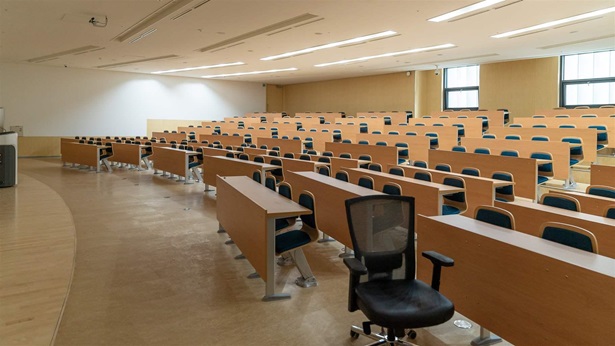
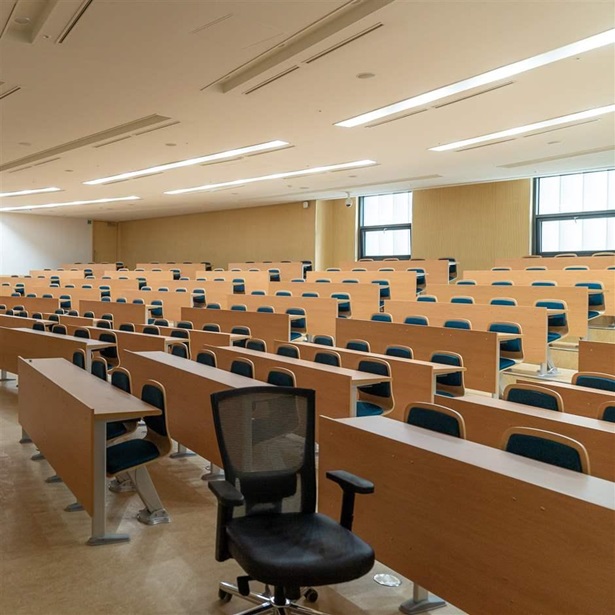
Students With Default History Foresee Difficulties


Addressing Income-Driven Student Loan Payments

